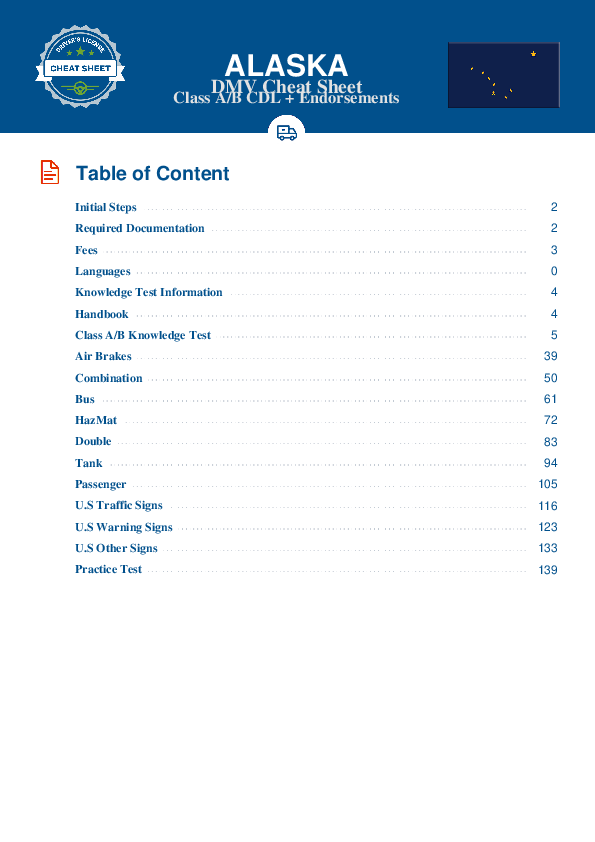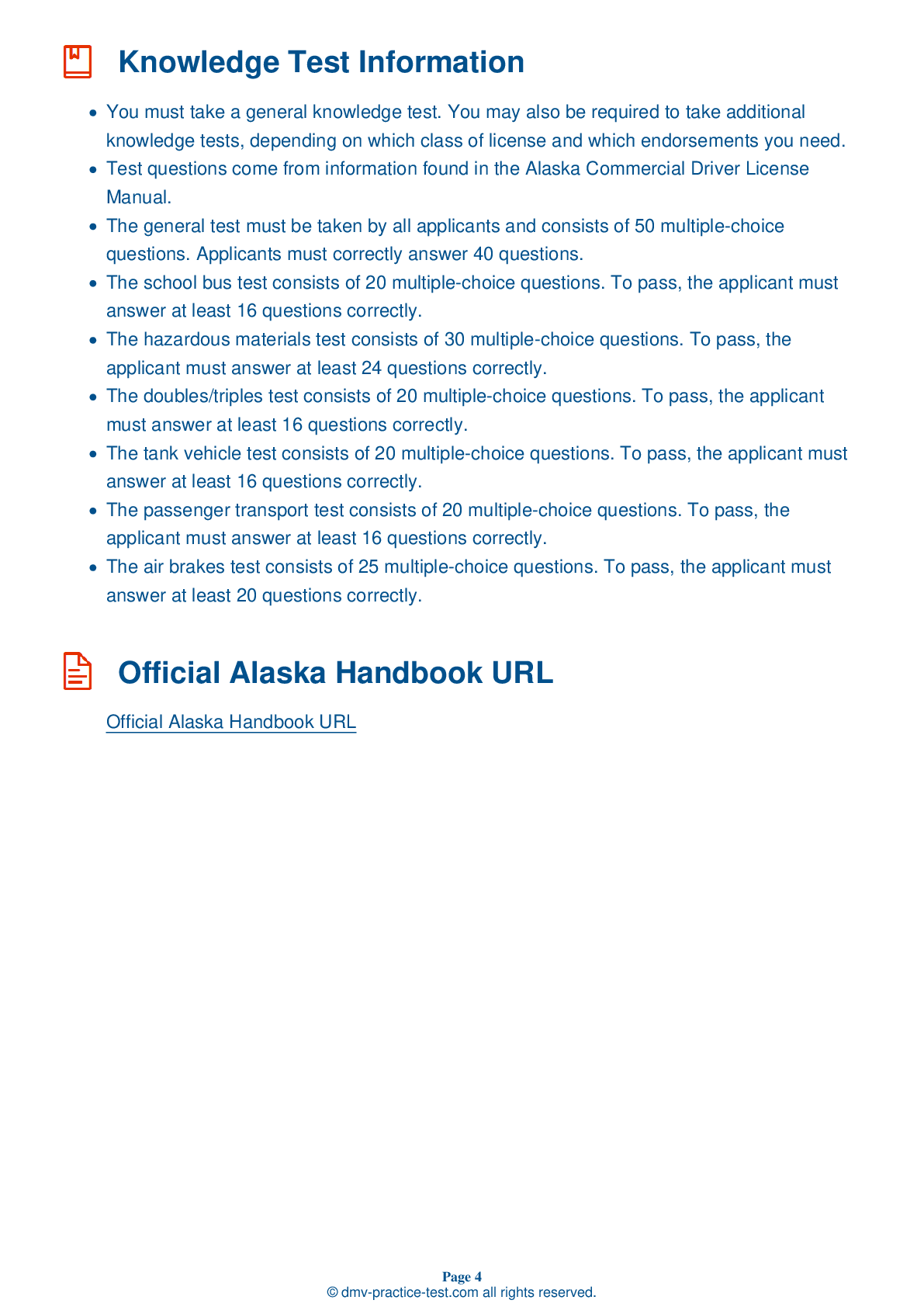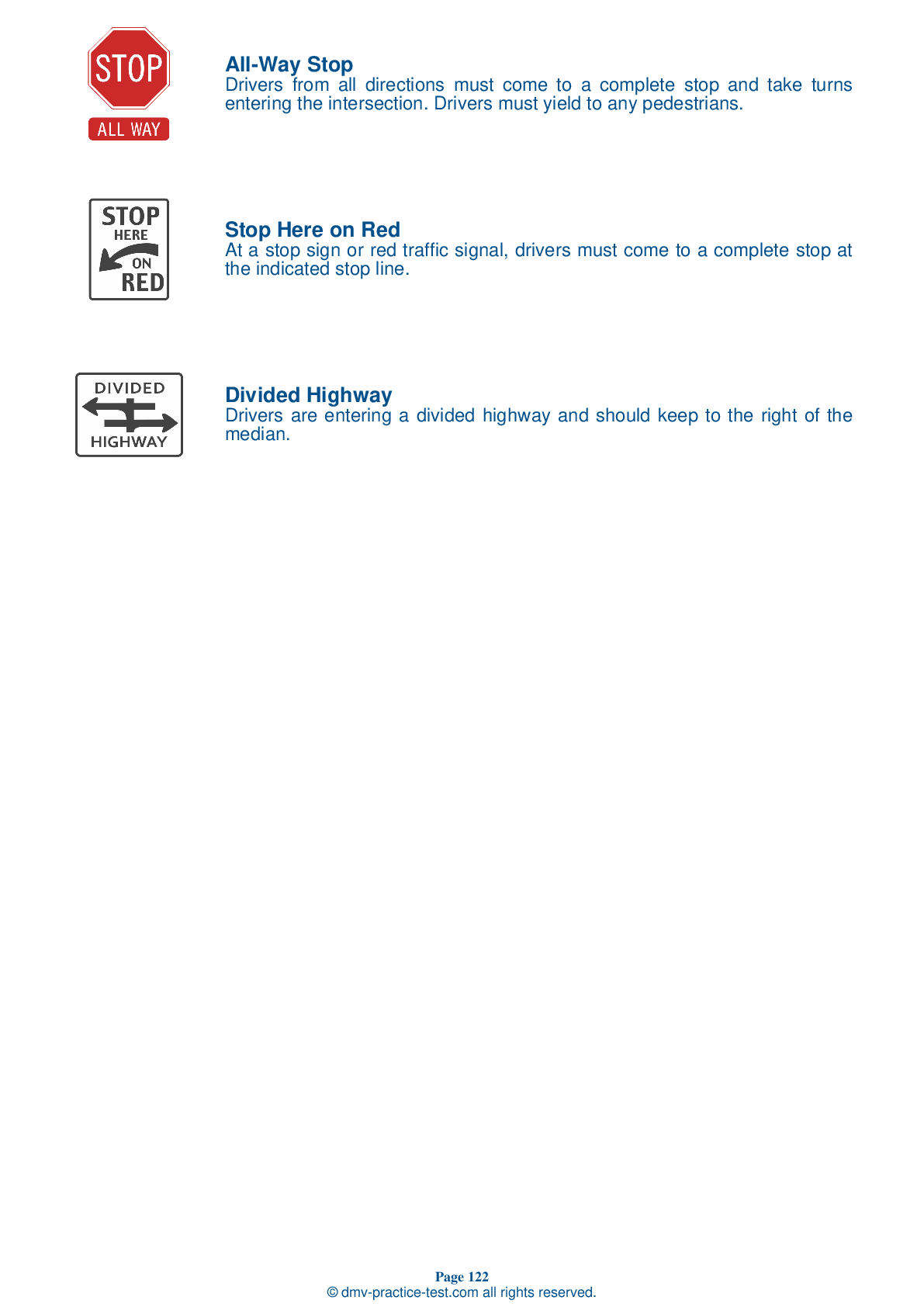Combination Vehicles Practice Test | Alaska 2025 #1
Train for FREE online with our Alaska CDL combination vehicle test. The official exam test consists of several obligatory parts, with all of them checking your knowledge of different blocks of road rules. If you need to obtain a AK combination license in 2025, practice as much as possible. Free sample tests published on our website will help you check and improve your knowledge and boost your grades. Please bear in mind that DMV requirements for issuing a combination license may vary from state to state.
1 . When a vehicle goes around a corner, the rear wheels:
When any vehicle goes around a corner, the rear wheels follow a different path than the front wheels. This is called off-tracking. The degree of off-tracking will be greater on long vehicles than on short vehicles.
2 . If your vehicle gets stuck on railroad tracks, you should:
If your vehicle gets stuck on railroad tracks for any reason, you should immediately exit the vehicle and walk away from the tracks. Contact the proper emergency authorities.
3 . Older trailers are not equipped with spring brakes. This means that if the air supply for a vehicle's air braking system leaks away:
Older trailers do not have spring brakes. This means that if the air supply in an older trailer's air tank has leaked away, there will be no working brakes connected to the trailer and its wheels will turn freely.
4 . If an air supply control is in its "emergency" position:
Tractor protection controls in older vehicles may be operated by levers instead of knobs. If an air supply control is set in its "emergency" position, the air supply will be stopped and the trailer emergency brakes will be applied.
5 . Before beginning a trip, you should:
Before a trip, you should ensure that air reaches all air brakes on all trailers by opening up the rear emergency line and service line shut-off valves and listening for escaping air. Close both shut-off valves before beginning to drive.
6 . What is a tractor protection valve?
A tractor protection valve keeps air in a tractor or truck air brake system should the trailer break away or develop a bad leak. The valve will close automatically if the pressure drops to an unsafe level.
7 . When backing up your tractor while coupling it to a trailer, the trailer brakes should be:
Correctly following the steps to couple and uncouple trailers is vital to safely operating a combination vehicle. Before backing your tractor under the trailer while coupling, make sure your trailer brakes are locked.
See the exact questions that will be on the 2025 Alaska DMV exam.
99.2% of people who use the cheat sheet pass the FIRST TIME
Lillian MCcranie explains how our CDL study guide was helpful in passing the exam and recommends it to everyone.
Cameron tells us how he purchased the CDL exam, and found it to be a useful tool which helped him pass the exam and find a job.



